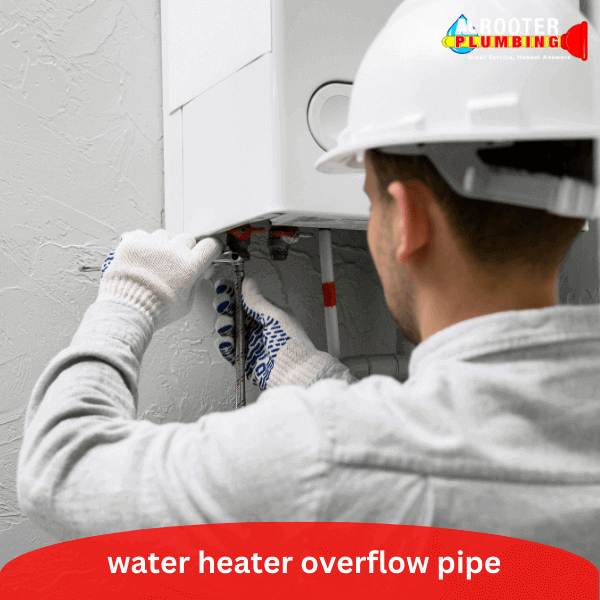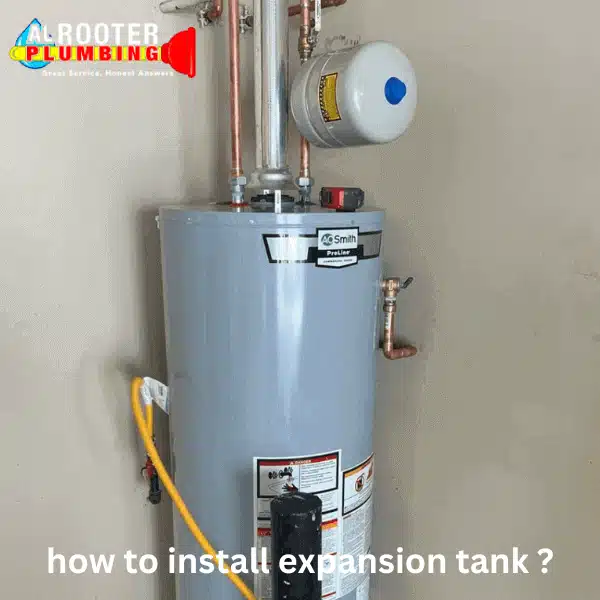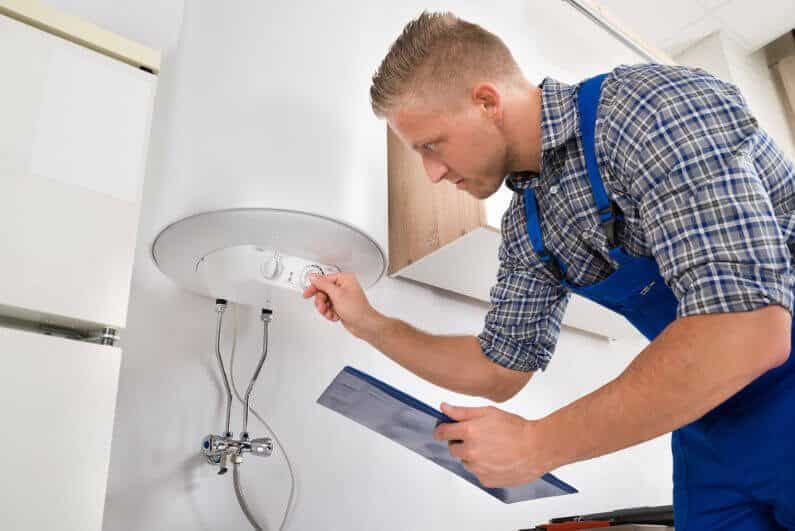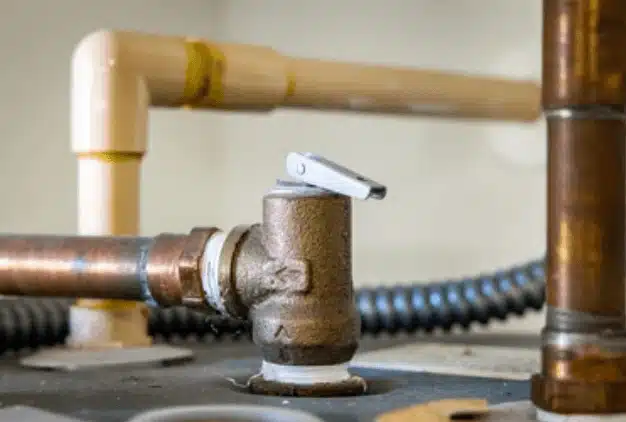When it comes to installing an expansion tank distance from water heater, it is essential to consider the recommended distance between the tank and the water heater.
This article aims to provide:
The installation process of an expansion tank distance from water heater involves several key steps.
This includes determining the appropriate distance, connecting the tank to the cold water line, and securing the tank in place to prevent movement.
Proper measurement and fitting are essential to ensure seamless integration with the water heater system.
The recommended distance between the expansion tank and water heater is typically determined by the specific requirements outlined by the expansion tank manufacturers.
It is crucial to consult the tank’s specifications and guidelines to ensure the correct placement.
For DIY enthusiasts, it is important to follow the manufacturer’s instructions meticulously.
This includes accurately locating the inlet and outlet pipes of the expansion tank distance from water heater, ensuring a secure and leak-free connection, and pressurizing the tank.
1-Check Manufacturer Guidelines:
Before starting the installation, carefully read and follow the manufacturer’s guidelines provided with the expansion tank.
This ensures you’re aware of specific recommendations and requirements for your particular model.
2-Choose an Appropriate Location:
Select a suitable location for the expansion tank within the recommended distance (usually 12 to 18 inches) from the water heater.

3- Turn Off Power and Water Supply:
Prior to installation, turn off the power to the water heater and shut off the water supply.
This helps prevent accidents and ensures a safe working environment.
4- Drain the System:
Use a hose to drain excess water from the water heater system.
This step minimizes pressure and makes it easier to work on the installation.
5- Secure Mounting:
Install the expansion tank securely in a horizontal position. Use appropriate brackets to mount it to a wall or other supporting structure, ensuring stability.
6- Connect Properly:
Connect the expansion tank to the cold water supply line using suitable fittings.
Make sure all connections are tight to prevent leaks. Align the tank’s arrow with the direction of water flow.
7- Adjust Air Pressure:
Adjust the air pressure inside the expansion tank to match the water pressure of your plumbing system.
Refer to the manufacturer’s instructions for the recommended pressure setting.
By following these DIY tips, you can install an expansion tank at the appropriate distance from the water heater, promoting efficient thermal expansion management in your plumbing system.
Always prioritize safety and accuracy during the installation process.
If in doubt, consult a professional plumber for assistance.
The primary purpose of an expansion tank distance from water heater is to accommodate the thermal expansion of water as it is heated.
This helps to relieve the pressure buildup, ensuring the system operates within a safe pressure range and mitigating the risk of damage.
If an expansion tank is not installed properly, it can lead to potential issues such as increased water pressure within the system, and in extreme cases.

Utilizing an expansion tank with a water heater offers several benefits, including:
1- prolonging the lifespan of the water heater.
2- maintaining consistent water pressure.
3- preventing potential water heater leaks or ruptures caused by excessive pressure buildup.

To install an expansion tank, start by shutting off the water supply and draining the system.
Next, locate the cold-water supply line and locate a suitable spot to install the tank, ensuring it is supported by the brackets according to the manufacturer’s instructions.
After securing the tank, connect it to the cold-water supply line using a tee fitting and make sure to add a shutoff valve.
Then, connect the tank’s air valve to the plumbing system vents or an open pipe, allowing the air to escape.
Once all the connections are secure, turn on the water supply and check for any leaks.
If everything is in order, adjust the air pressure in the tank to match the system’s pressure.
Finally, double-check all the connections and ensure the tank is properly secured before turning the system back on.
This will ensure the expansion tank is properly installed and functioning correctly.
The distance between the expansion tank and water heater plays a critical role in performance.
Incorrect placement can affect the effectiveness of the tank in accommodating thermal expansion, potentially leading to increased pressure within the system.
When determining the distance between the expansion tank and the water heater, factors such as:
the water heater’s capacity
system pressure
the specific requirements outlined by the expansion tank manufacturers must be taken into consideration.
Consulting with a professional plumber can further aid in determining the ideal placement.

1- Locate the Cold Water Supply Line: Identify the cold water supply line on the water heater.
This is where the expansion tank will be connected to manage thermal expansion.
2- Choose an Optimal Location: Install the expansion tank within the recommended distance, typically between 12 to 18 inches, from the water heater.
This ensures efficient absorption of expanded water volume.
3-mSecure Mounting: Mount the expansion tank horizontally for proper functionality.
Ensure it is securely attached to the wall or other supporting structure using appropriate brackets.
4- Connect to Cold Water Supply: Use suitable fittings to connect the expansion tank to the cold water supply line.
Ensure all connections are tight to prevent leaks.
5- Align with Water Flow: Orient the expansion tank so that the arrow indicating the direction of water flow aligns correctly with the cold water supply line.
6- Adjust Air Pressure: Set the air pressure inside the expansion tank to match the water pressure of your plumbing system.
Refer to the manufacturer’s instructions for specific pressure recommendations.
7- Check for Leaks: After installation, turn the water supply back on and carefully inspect all connections for leaks.
Address any issues promptly to ensure the proper functioning of the expansion tank.
Replacing an expansion tank is a straightforward process that can be done with some basic tools.
Here’s a step-by-step guide:
1- Turn Off Power and Water Supply:
Switch off the power to the water heater.
Shut off the water supply to the heater.
2- Drain the System:
Connect a garden hose to the drain valve at the base of the water heater.
Open the valve and drain enough water to relieve pressure from the system.

3- Disconnect Old Expansion Tank:
Use a wrench to disconnect the old expansion tank from the water heater.
4- Release Pressure:
Open a hot water faucet in the house to release any remaining pressure.
5- Remove Old Tank:
Once the pressure is released, detach the old expansion tank from the pipes.
6- Install New Expansion Tank:
Install the new expansion tank in the same location as the old one.
Use appropriate fittings to connect the tank to the cold water supply line.
7- Secure the Tank:
Ensure the tank is securely mounted in a horizontal position.
8- Reconnect Pipes:
Reconnect the pipes to the new expansion tank using a wrench, ensuring tight connections.
9- Turn On Water Supply:
Turn on the water supply to the water heater.
Remember to follow any manufacturer-specific instructions that come with the new expansion tank, and consult local plumbing codes if needed.
If you are uncertain about any step, consider seeking the assistance of a professional water heater plumber.
10- Check for Leaks:
Check all connections for leaks. If any are found, tighten the fittings.
11-Restore Power:
Switch the power back on to the water heater.
12- Monitor System:
Monitor the system for a few hours to ensure there are no leaks and that the expansion tank is functioning correctly.
The thermal expansion tank works in conjunction with a water heater by providing a designated space for the expanding water volume as it is heated.
This helps to maintain the system pressure within a safe range while preventing potential damage to the water heater and associated components.
The key steps for properly installing an expansion tank distance from water heater involve:
accurately measuring and determining the distance
connecting the tank to the cold water line
securing proper fitting
pressurizing the tank to the recommended air pressure level for efficient operation.
When locating the inlet and outlet pipes of the expansion tank in relation to the water heater, it is essential to ensure a direct and secure connection.
Proper positioning and fitting of the pipes, alongside adequate sealing to prevent leaks, are crucial best practices to adhere to.
Common issues faced when installing an expansion tank distance from water heater may include:
improper distance placement
inadequate connection to the cold water line
difficulty in achieving the recommended air pressure within the tank.
Recommended tips for ensuring the proper performance of an expansion tank connected to a water heater involve:
meticulous installation in accordance with the manufacturer’s guidelines
regular maintenance to check for leaks or pressure issues
consulting a professional plumber for any concerns related to the system’s performance.
To better experience the installation of an expansion tank for their water heater system:
users can benefit from thorough research on the tank’s specifications
engaging with online forums for guidance
seeking advice from professionals to ensure a seamless and efficient installation process.

